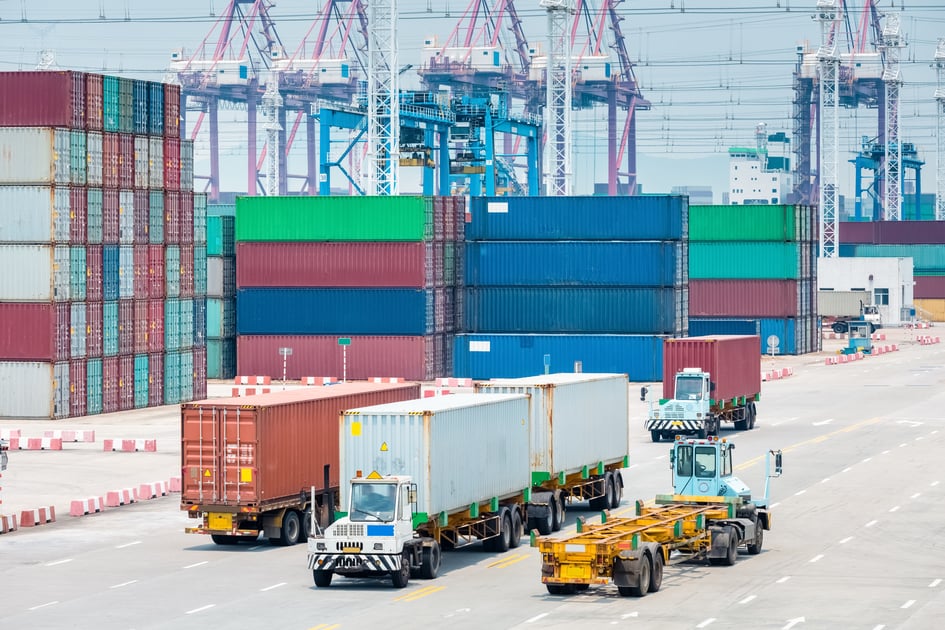Definition of IPI Freight or Interior Point Intermodal
IPI freight is used to define inbound freight moves from a port to a shipper’s door within the interior of the country via a domestic or international intermodal container.
The distinction with IPI freight is it is being sent to the consignee’s door.
Inbound freight moved to an intermodal rail terminal or container yard is called a landbridge freight move.
An IPI intermodal shipment is typically moved via truck for short distances and intermodal rail for longer distances. In some cases, the freight moves directly inland via the ocean container, while other times the freight is transloaded at the entry port location city by a third party logistics company (3PL) into a domestic 53’ intermodal container.
A little over 40% of the IPI freight is transloaded and that figure continues to rise.
Reasons Shippers Opt for Transloading IPI Freight
- Transloading gives shippers more options and control of where there product is sent at the time it enters the country versus making the decision before the product is put on the water 30 to 40 days before it arrives.
- By consolidating 20’ and 40’ ISO containers into 53’ domestic intermodal containers shippers gain additional cubic foot capacity in each container, thus reducing the overall count of boxes required to move inland which reduces inland freight costs.
- Steamship lines continue to encourage shippers to keep the ISO ocean intermodal containers at the port of entry, so the container does not have to be shipped back to the port empty, meaning without revenue.
- To offset the issue of returning an ISO container box back to the port city after an interior land movement a steamship line will try to recover some of the costs by offering their boxes in the re-positioning (re-po) intermodal market.
- Through the re-po market a shipper will move domestic freight on the ISO containers from an interior point to a location that is closer to the port of entry. This will drive fewer non-revenue miles for the steamship company and typically at a favorable price for the shipper.
- The important point here is while a number of the ISO boxes will be loaded for export, a far greater number go back overseas empty because of the imbalance of trade.
Container Freight Stations (CFS) and IPI Freight
IPI freight is often moved by freight forwarders through a 3PL, known as a container freight station (CFS) where the CFS will consolidate and re-consolidate various customers’ freight from the port inland to the cities of similar destination.
For example, the CFS has multiple customers’ freight coming in multiple import ISO containers that they then consolidate to similar destination cities where they then deconsolidate the shipment into smaller LTL shipments that go out of the pooling / consolidation city via LTL or straight truck freight options.
The largest US CFS company is STG Logistics.
Foreign Trade Zone
Often shippers will not pay duties as soon as the import arrives, but instead they have a CFS ship the freight in-bond to a foreign trade zone (FTZ) to defer the payment of duties until the product is purchased by the customer.
The primary benefits an FTZ provides are duty deferment or relief from inverted tariffs, as the product is transformed into a lower taxes item within the harmonized tariff schedule (HTS) during a manufacturing or assembly.
An example of duty inversion can be seen in the automotive industry. All US auto plants are set up as FTZ’s. A car has the tariff rate of 2.5%.
So, under the duty inversion import process anything that enters the FTZ at a higher tariff rate than the 2.5% will come to the facility in-bond under a CF 7512. Once the fully assembled car rolls off the assembly line and exits the plant all duties will be paid. Under this example, if a car has an imported AM/FM radio that came to the facility in-bond would only be taxes 2.5% versus its stand alone tariff rate of 8%, thus tremendous cost savings.
For more on how to improve your supply chain:

If you're ready to take the next step, at InTek Freight & Logistics, we can help. Just tell us what you need and we'll discuss how our expertise can help with the unique shipping challenges your business faces. Rather do a bit more research first? View our Freight Guides for comprehensive articles and eBooks on all things freight and logistics.



